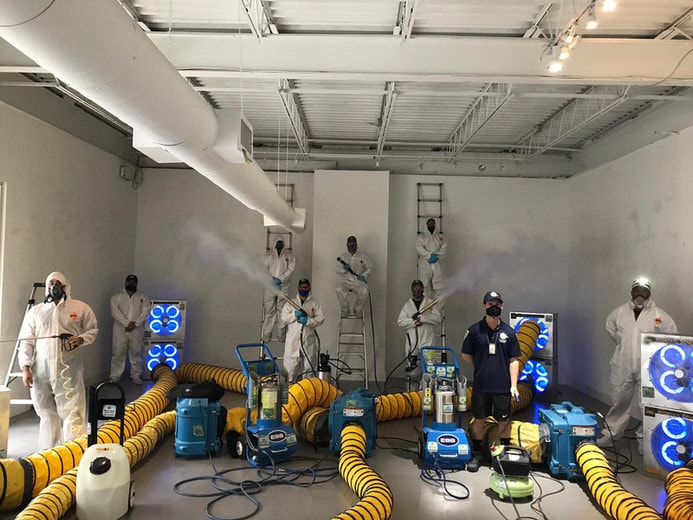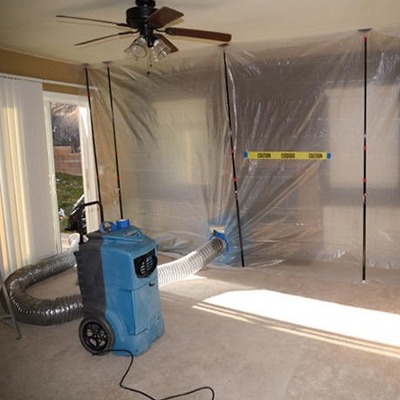Precision Mold Remediation Techniques for Making Certain a Healthy Living Setting
In the world of keeping a healthy living environment, the efficiency of mold and mildew removal strategies stands as an important facet that demands accuracy and know-how. By discovering the intricacies of mold removal approaches, one can get insight right into protecting versus mold-related issues and cultivating a healthier habitat.
Recognizing Mold And Mildew Growth Aspects
Understanding the vital factors that add to mold growth is important in creating effective strategies for mold and mildew remediation. Mold and mildew calls for three major elements to grow: dampness, ideal temperature levels, and natural product for food. Dampness is maybe one of the most critical aspect as mold and mildew spores can promptly spread out and colonize in damp atmospheres. Leakages, floodings, high humidity levels, or condensation give the required moisture for mold and mildew growth. Temperature level likewise plays a considerable duty, with many molds preferring temperature levels in between 60-80 ° F(15-27 ° C) Mold and mildew feeds on organic materials such as timber, paper, drywall, and textiles.

Assessment of Mold And Mildew Infestations
Having actually recognized the vital elements that add to mold development, the next essential action is analyzing the extent of mold and mildew invasions within a building. Mold and mildew assessment involves a complete examination to identify the kind of mold and mildew present, the impacted areas, and the seriousness of the infestation. Specialist mold and mildew assessors make use of a mix of visual examination, dampness meters, thermal imaging video cameras, and air tasting to gather information on the mold and mildew trouble.
Visual inspection is often the very first step in assessing mold invasions, where experts aesthetically check out locations susceptible to mold and mildew development, such as basements, attic rooms, and restrooms. This aids recognize visible mold and mildew development and locations with indications of water damage or high wetness degrees. Wetness meters are then used to detect moisture degrees in building materials, assisting in finding covert mold and mildew growth behind walls or ceilings.
Additionally, thermal imaging electronic cameras can be utilized to find temperature differences that may suggest wetness problems advertising mold and mildew growth. Air sampling is another important method made use of to gather airborne mold spores, providing information on the concentration and kinds of mold present in the indoor setting. By utilizing these assessment techniques, professionals can precisely examine the mold and mildew invasion and create an effective remediation plan to guarantee a healthy and balanced living environment.

Implementing Targeted Remediation Methods
To efficiently address mold invasions, executing targeted remediation techniques is necessary for getting rid of the source of mold and mildew growth and making sure a mold-free atmosphere. These methods include a systematic technique tailored to the specific mold and mildew concerns identified throughout the assessment stage. By targeting the underlying variables adding to mold growth, such as moisture breach, poor ventilation, or building material problems, removal initiatives can be a lot more accurate and efficient.
One targeted remediation strategy is to resolve water leakages promptly to stop moisture build-up, which is a main motorist of mold and mildew expansion. This may include fixing pipes leaks, boosting drain systems, or boosting waterproofing actions. Furthermore, enhancing ventilation in damp locations can aid Visit This Link minimize moisture levels, producing an environment less favorable to mold and mildew growth.
Additionally, targeted removal approaches might consist of removing and replacing mold-infested materials, such as drywall or insulation, and using antimicrobial therapies to inhibit future mold advancement. Routine tracking and upkeep are crucial to sustaining a mold-free atmosphere following remediation efforts - local mold remediation philadelphia. By carrying out these targeted approaches, homeowner can properly combat mold and mildew infestations and advertise a healthier living environment
Making Use Of Advanced Mold Elimination Technologies
Advanced mold removal modern technologies play a critical duty in attending to mold problems effectively and comprehensively. These systems can catch and filter out mold and mildew spores and other air-borne particles, significantly minimizing the spread of mold during remediation.
Moreover, advanced mold elimination modern technologies consist of infrared electronic cameras that can find covert dampness resources within walls or ceilings, helping in the precise recognition of locations vulnerable to mold growth. mold remediation philadelphia pa. This technology makes it possible for remediation specialists to target afflicted locations a lot more properly, resulting in an extra comprehensive removal procedure
Ultraviolet (UV) light therapy is an additional cutting-edge technology used in mold removal. By leveraging these innovative innovations, mold removal professionals can efficiently remove mold infestations and produce a healthier living setting for occupants.
Preventing Future Mold Reoccurrences
With the successful elimination of mold and more helpful hints mildew invasions using sophisticated technologies, the emphasis currently changes towards carrying out robust approaches to prevent future mold and mildew reappearances. Avoiding mold from reoccurring is critical for maintaining a healthy interior setting.
Appropriate air flow is another necessary element of mold and mildew avoidance. Guaranteeing adequate air flow in all areas of the building can aid reduce moisture degrees and prevent my blog moisture buildup. Utilizing dehumidifiers in moist areas such as basements can also assist in controlling dampness degrees.
Maintaining tidiness and without delay dealing with any water damage or spills can even more aid stop mold and mildew development. Regular cleaning routines ought to consist of dusting, vacuuming, and cleaning down surface areas to avoid the accumulation of mold spores.
Educating passengers regarding mold and mildew avoidance practices, such as appropriate ventilation and moisture control, can also add to a proactive strategy in protecting against future mold and mildew issues. By carrying out these strategies, the danger of mold and mildew recurrences can be considerably decreased, resulting in a much healthier living setting.
Conclusion
To conclude, accuracy mold removal methods are vital for maintaining a healthy living setting. By recognizing mold and mildew development variables, assessing problems, applying targeted techniques, making use of innovative removal innovations, and preventing future recurrences, one can efficiently fight mold and mildew issues. It is necessary to prioritize mold remediation to make sure the health of residents and avoid possible carcinogen related to mold and mildew direct exposure. Proper remediation methods can aid produce a safe and healthy and balanced living environment for all.
